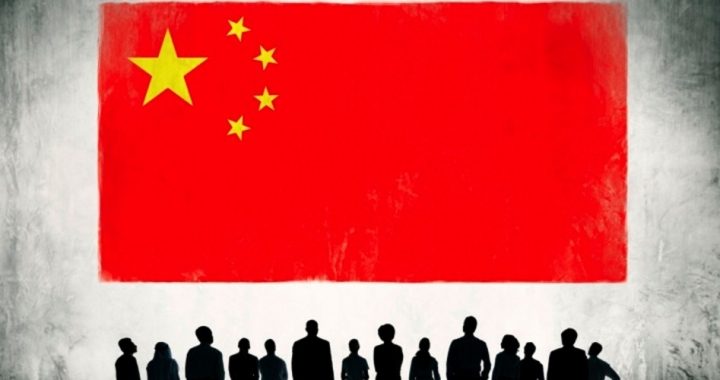
On October 26, 2015, the Chinese Communist Party newspaper Study Times published a commentary article advocating Communist China’s eventual participation in the Trans-Pacific Partnership (TPP).
The TPP is a proposed “trade” pact negotiated among 12 Pacific Rim nations (Australia, Brunei, Canada, Chile, Japan, Malaysia, Mexico, New Zealand, Peru, Singapore, the United States, and Vietnam) representing 40 percent of world GDP. Earlier this month, U.S. Trade Representative Michael Froman announced that the United States and the 11 other participating Pacific Rim nations had reached a final agreement on the TPP.
The biweekly Study Times is an official publication of the Party School of the Central Committee of the CPC (Communist Party of China), otherwise known as the Central Party School, whose main function is training rising Chinese Communist Party officials.
“The Central Party School publishes several newspapers and periodicals, such as Study Times, Theory Forum, Chinese Cadres Tribune and Journal of the Party School of the Central Committee of the CPC, and runs a book publishing house and an audio-visual publishing house,” states the Central Party School’s official website.
The commentary published in the Study Times stated commonality between both the TPP and Communist China’s own economic objectives. “The rules of the TPP and the direction of China’s reforms and opening up are in line,” the Communist Party of China said in its newspaper.
The commentary added, “China should keep paying close attention and at an appropriate time, in accordance with progress on domestic reform, join the TPP, while limiting the costs associated to the greatest degree.” In other words, China should bide its time for an expedient opportunity to fully join the TPP.
The Study Times commentary also admitted that “China is currently working with the US to discuss bilateral investment agreements in order to access the ‘national treatment before admission + Negative List’ mode as the basis for negotiations, in line with TPP requirements.”
In 2008, President George W. Bush and then-Chinese President Hu Jintao began negotiations toward a U.S.-China Bilateral Investment Treaty (BIT). The Obama administration announced the completion of a four-year government review on the U.S.-China BIT in 2012 and resumed negotiations in 2013. Although little is known of the major U.S.-China BIT, it is significant that the Study Times revealed that U.S.-China BIT negotiations are “in line with TPP requirements.” A U.S.-China BIT that is line with TPP requirements would likely easily enable China’s inclusion in the TPP.
The commentary article, entitled “How to face the TPP,” originally appeared in Mandarin on page A4 of the October 26, 2015 first edition of the Study Times newspaper.
The Study Times is not the first Communist Chinese outlet to voice its support for China’s inclusion in the TPP. On December 22, 2014, China Daily, the Beijing-based English-language newspaper and propaganda outlet for the Publicity Department of the Communist Party of China (CCPPD), also expressed approval of China joining the TPP as a means to facilitate the even larger proposed Free Trade Area of the Asia-Pacific (FTAAP):
In an institutional sense, the Beijing-led FTAAP, if successfully negotiated, will put an end to the economic fragmentation in the Asia-Pacific region. The co-existence of the US-led Trans-Pacific Partnership Agreement and the Regional Comprehensive Economic Partnership favored by China is feasible if both jointly serve the more inclusive FTAAP.
Also on March 4, 2015, senior Chinese diplomat Li Shengjiao wrote an article for the Huffington Post describing the current purported U.S.-China tensions as overblown hype:
There have been many voices in the U.S. that have described the TPP and the Free Trade Area of the Asia-Pacific (FTAAP) as two complete competing trade initiatives, and labeled the “competition” as a China-U.S. tug-of-war in the Asia-Pacific region. They fear that China is trying to gain dominance in Asia-Pacific trade agendas and displace the U.S.-led TPP by pushing for the FTAAP. Although the appearance of rivalry does exist, much of the hype is overblown. [Emphasis added.]
An official representative of the Communist Party of China (CPC)-controlled government in Beijing favors both the TPP and FTAAP, contending that the U.S.-China rivalry is “hype” that is “overblown.” Yet despite acknowledging this seeming rivalry, Li admits that both the TPP and FTAAP are not mutually at odds with one another, but are instead “compatible and complement each other”:
The FTAAP is seen by many as a rival to the U.S.-led TPP, which is currently under negotiation with Japan and 10 other Asia-Pacific countries, with the exclusion of the world’s second-largest economy. The truth is, the FTAAP is neither necessarily a contradiction nor a challenge to the TPP; the two trade arrangements could be compatible and complement each other. [Emphasis added.]
Those pushing the false narrative of an anti-China TPP include the major media (particularly the Wall Street Journal and the New York Times), President Obama in his 2015 State of the Union address, Republican presidential candidate Senator Marco Rubio, various Republican lawmakers, and nonprofit advocacy groups such as the American Action Network, which was founded in 2010 by CFR-member Frederic Malek and neoconservative former U.S. Senator Norm Coleman (R-Minn.).
Duplicity is being utilized to propel the United States into the TPP, where ultimately countries such as Communist China or even Russia could join without the consent of Congress. As intended by its designers, the TPP is the framework for the East-West convergence or merger of Communist China with the United States.
The latest news of TPP’s approval by China’s Communist Party Study Times newspaper should be a powerful indicator that the TPP bodes ill for the United States. Lawmakers on Capitol Hill should think twice before voting.
Related article:





